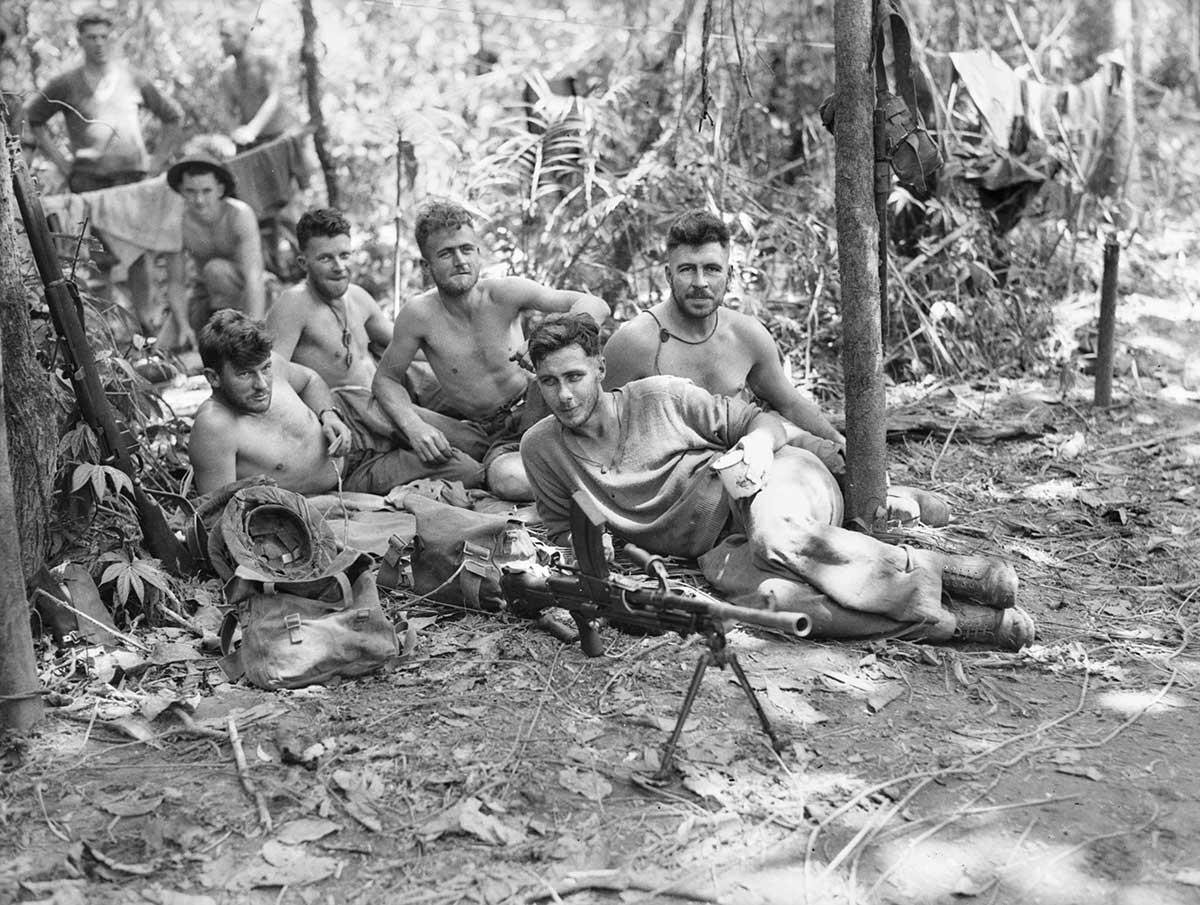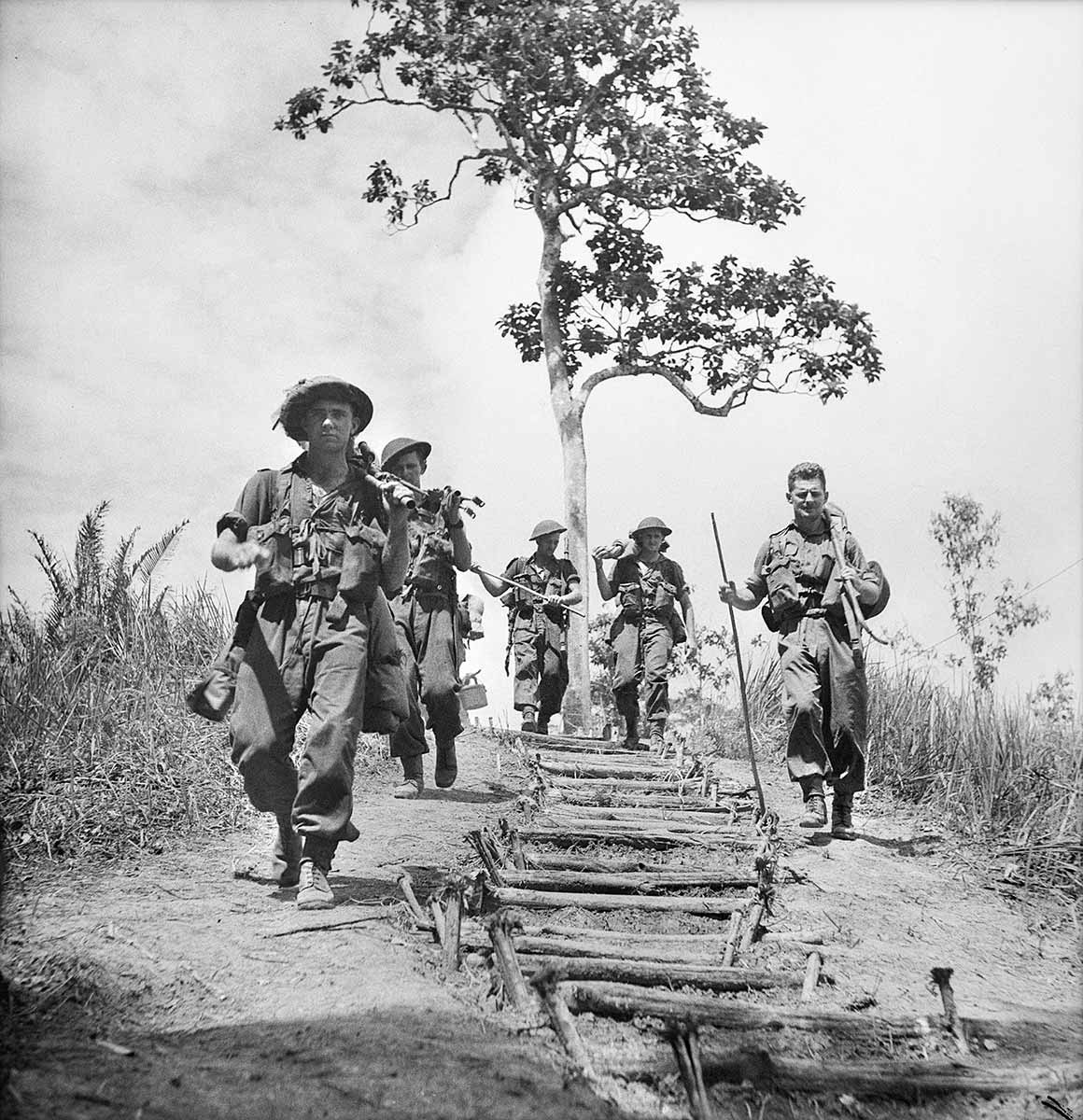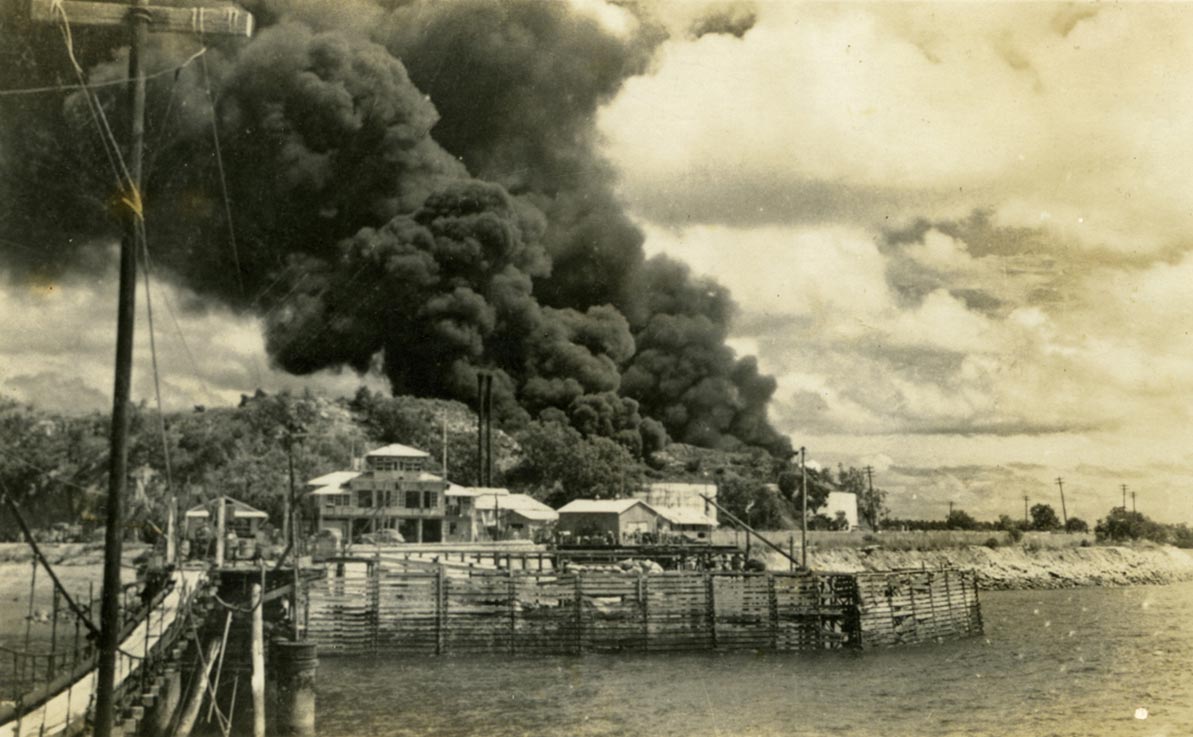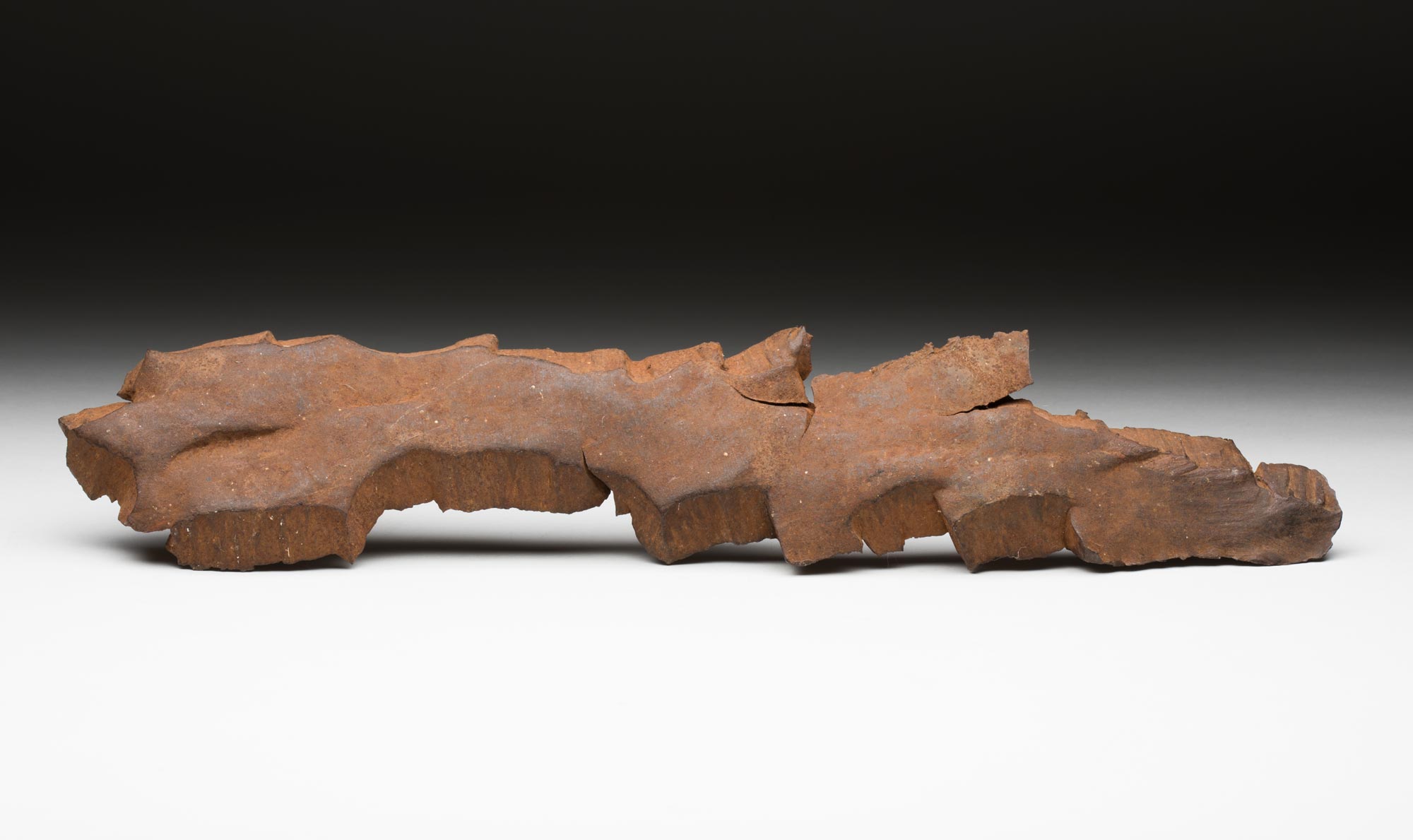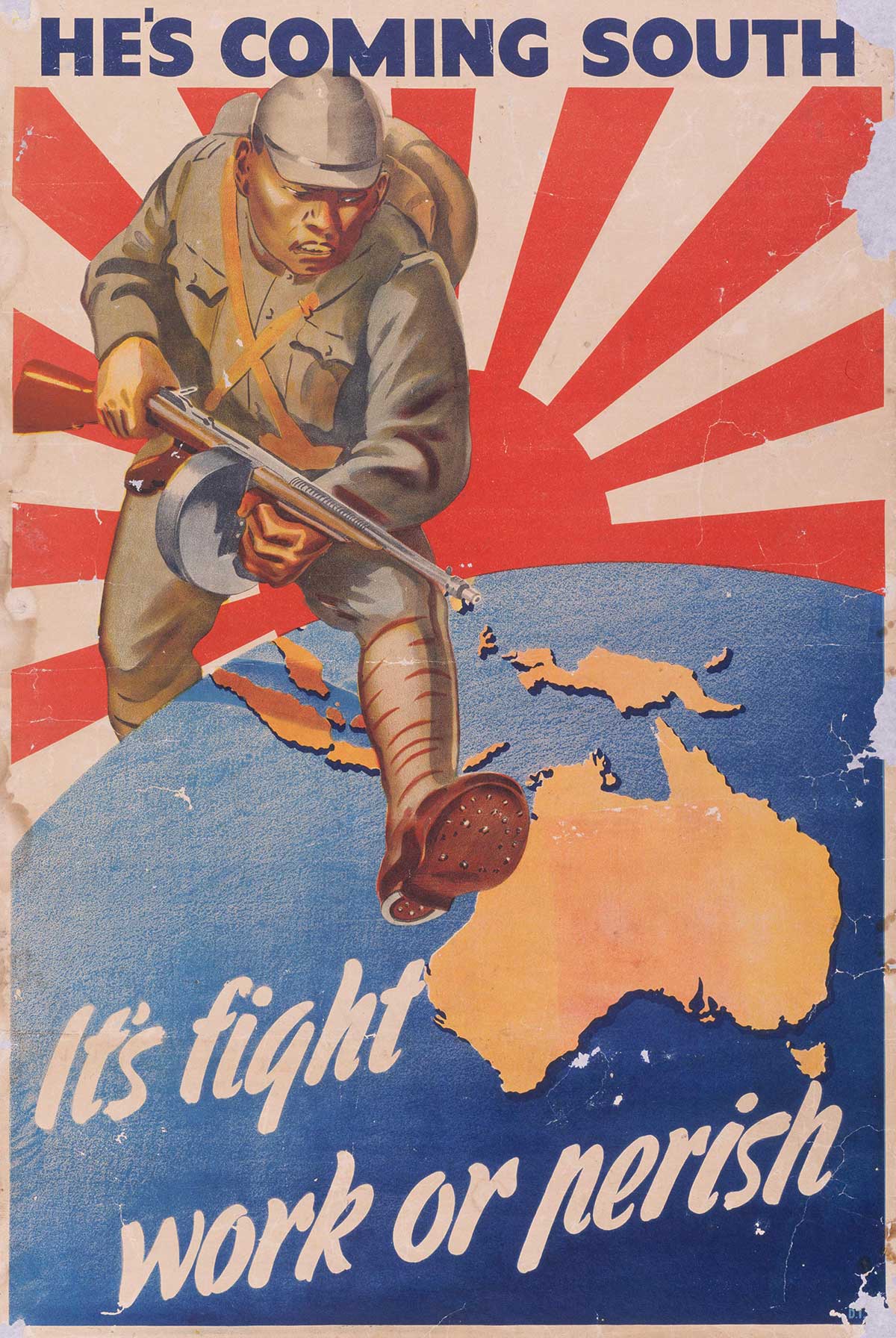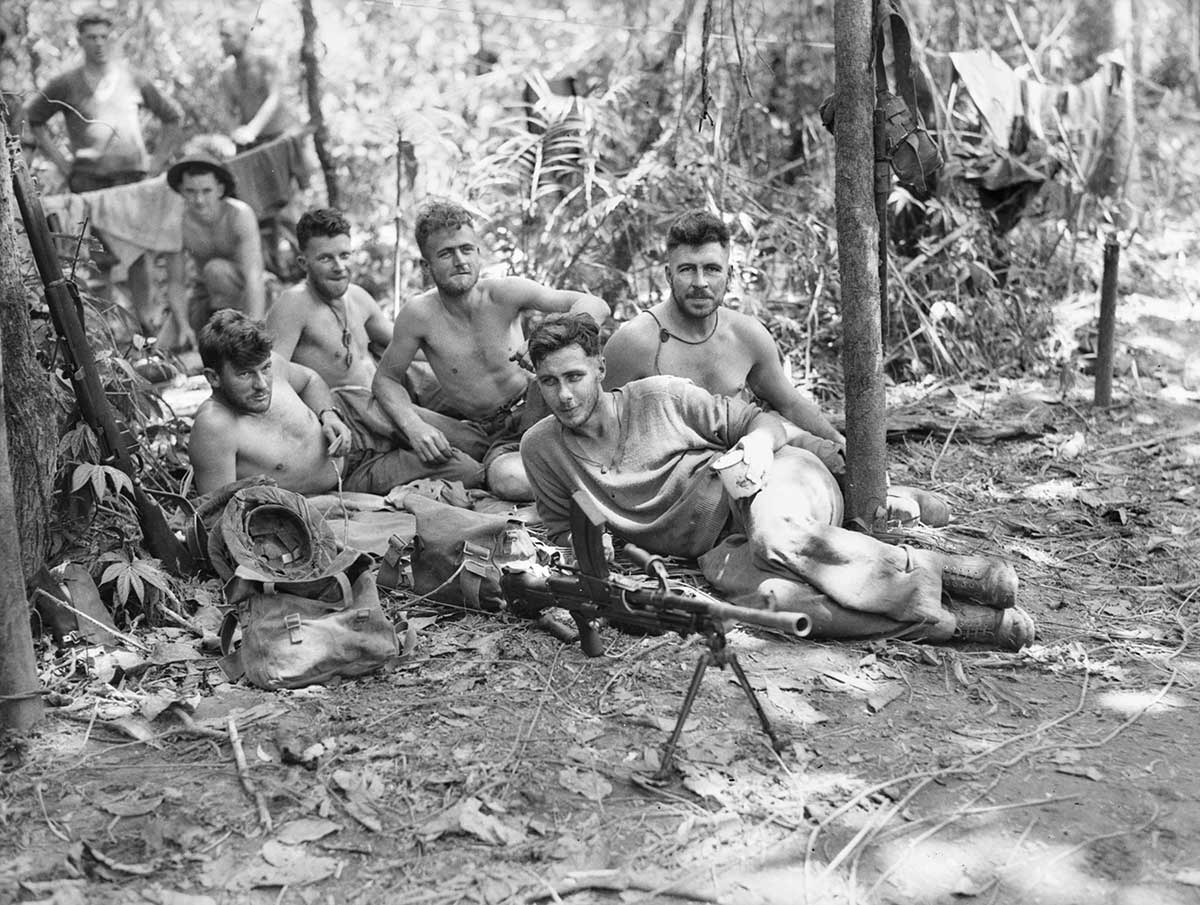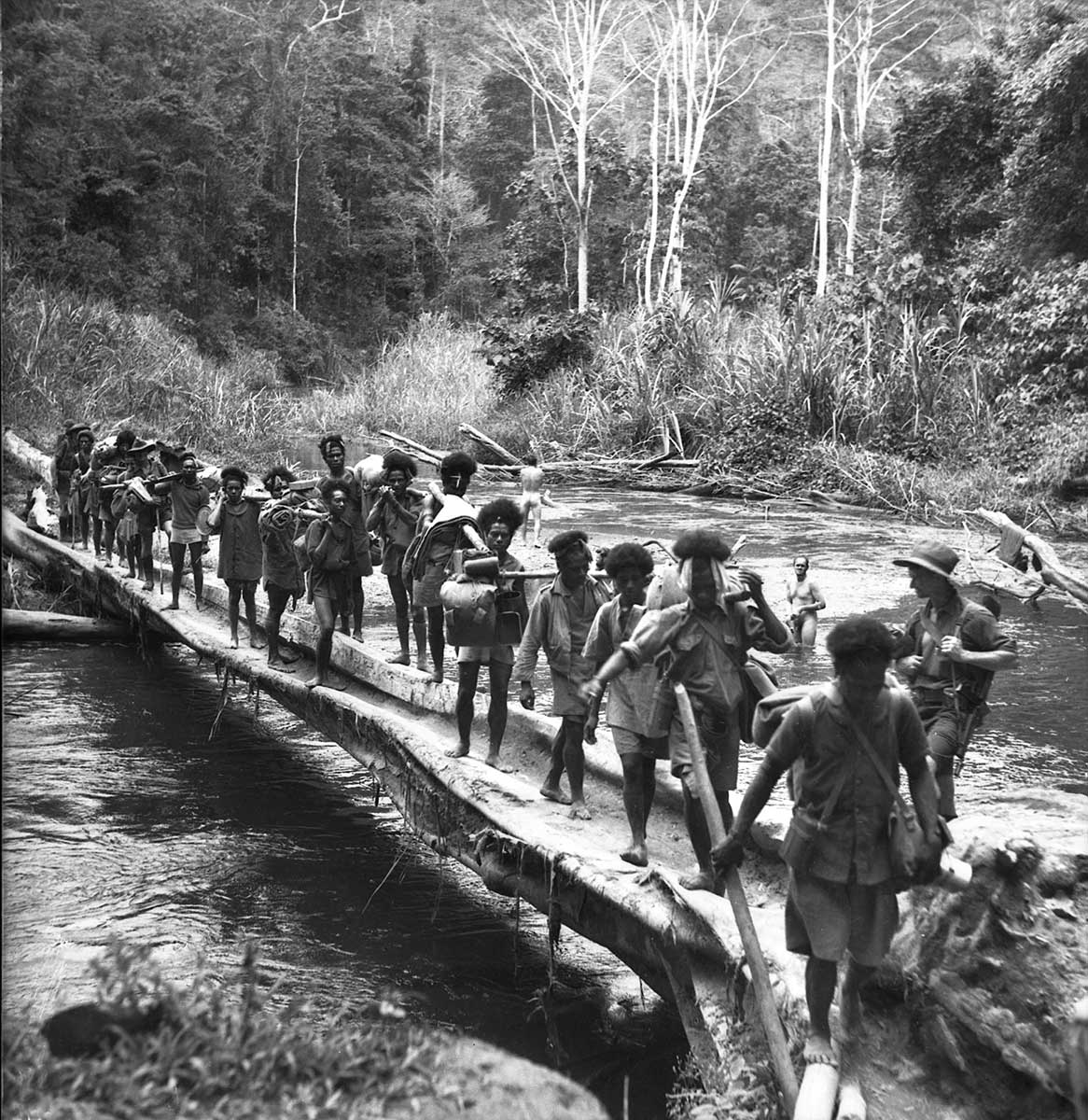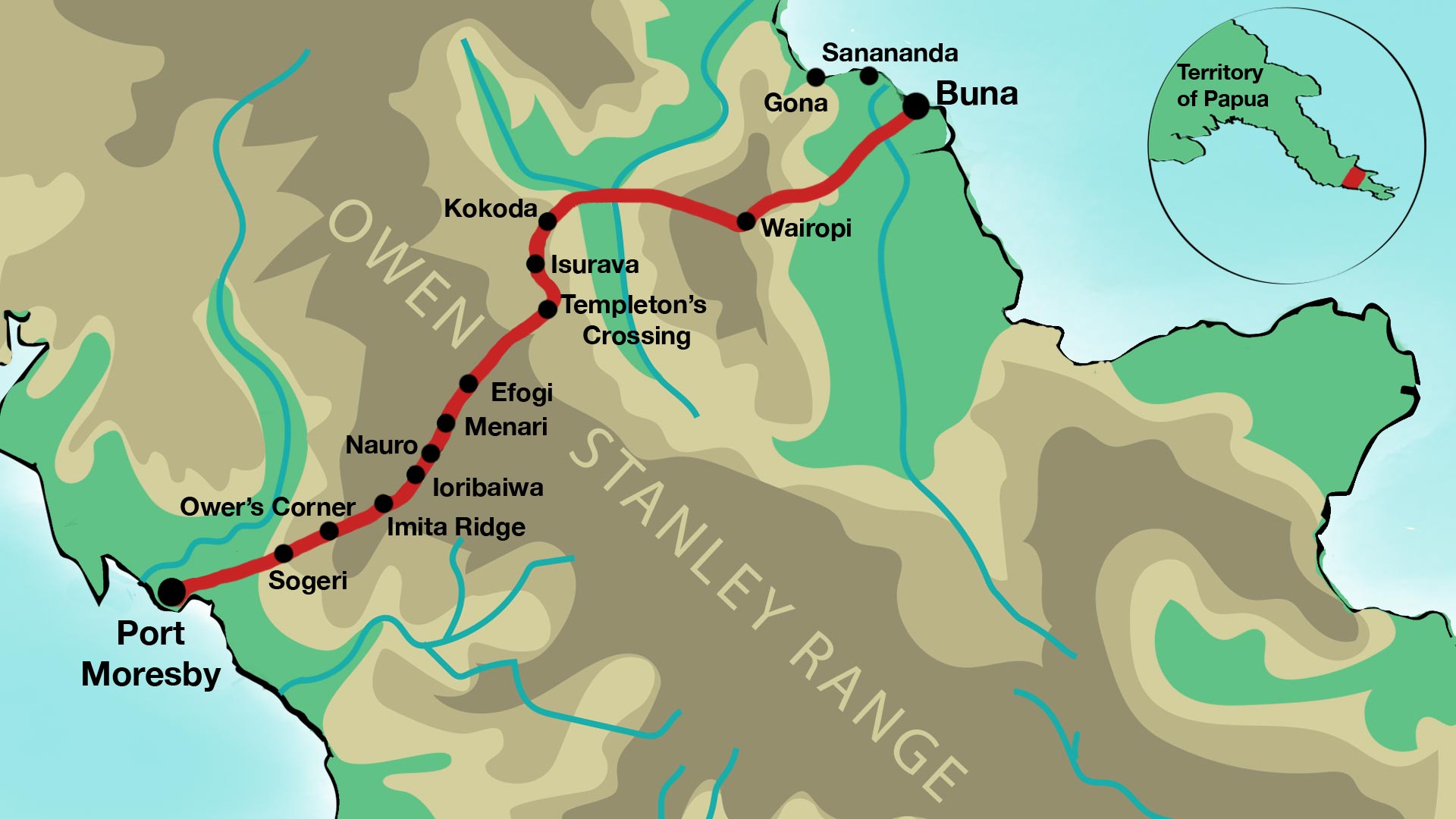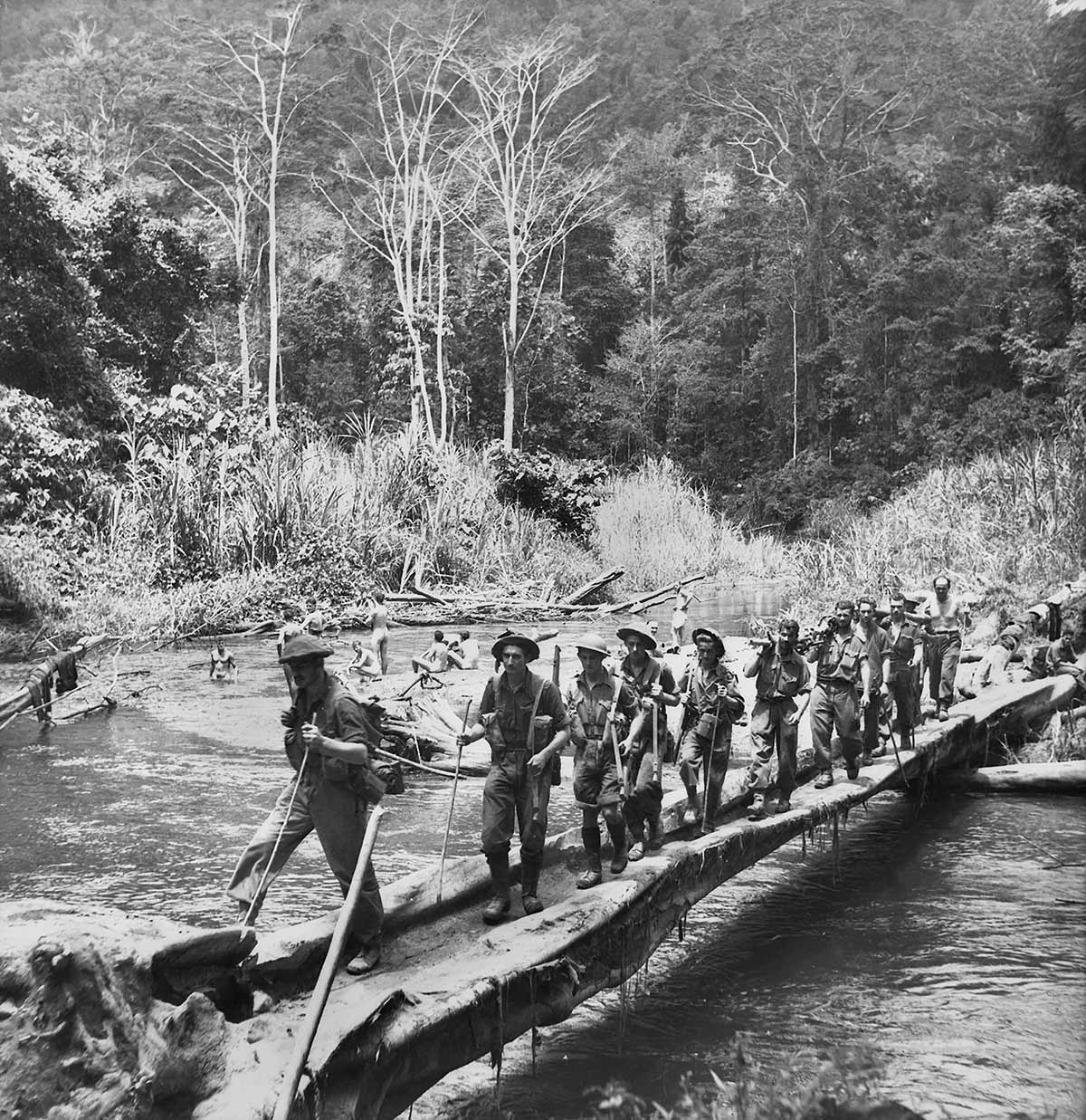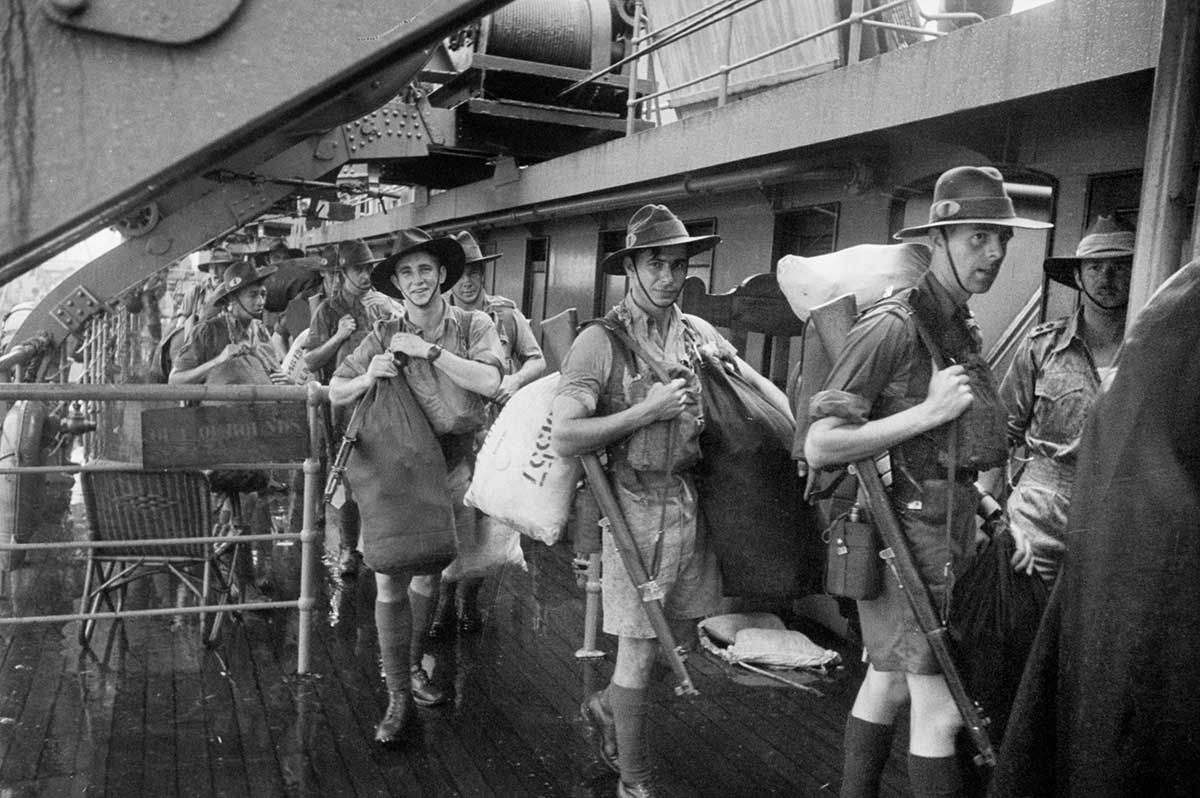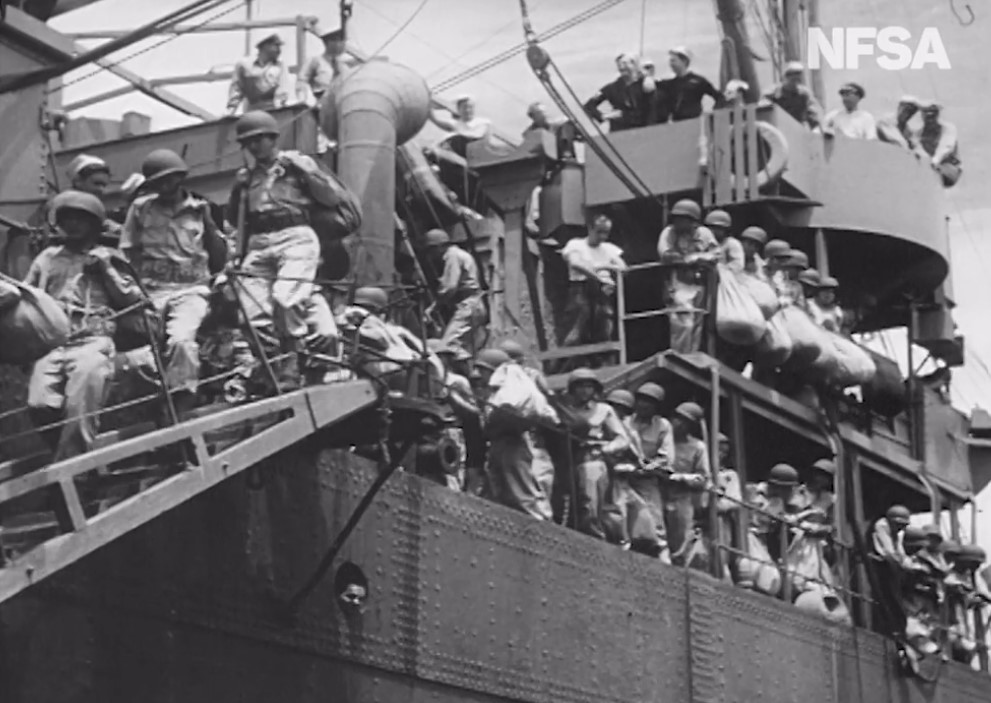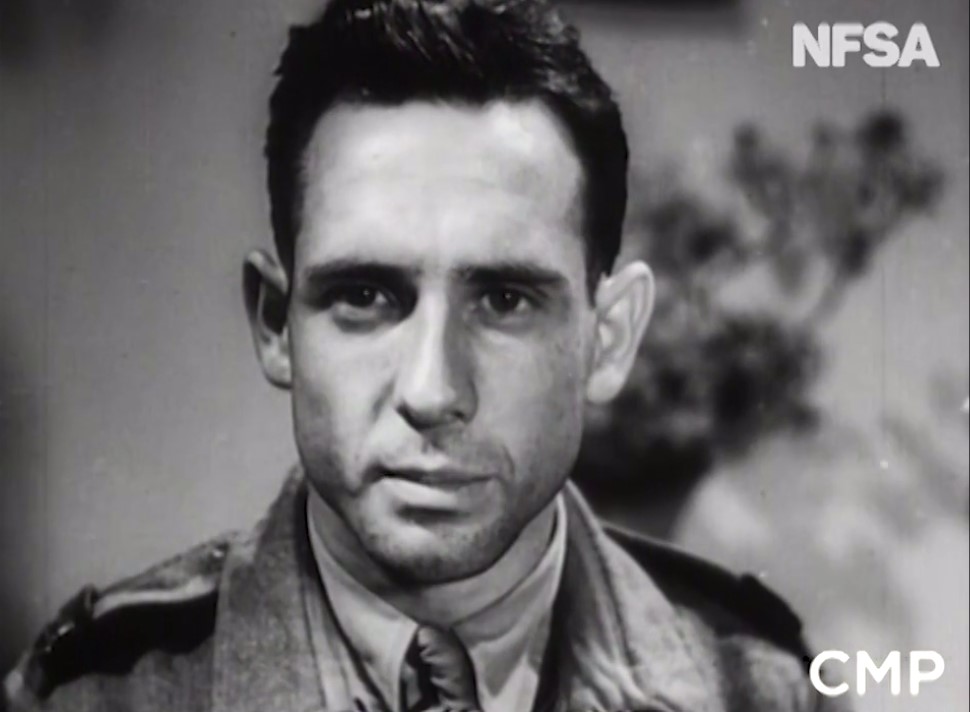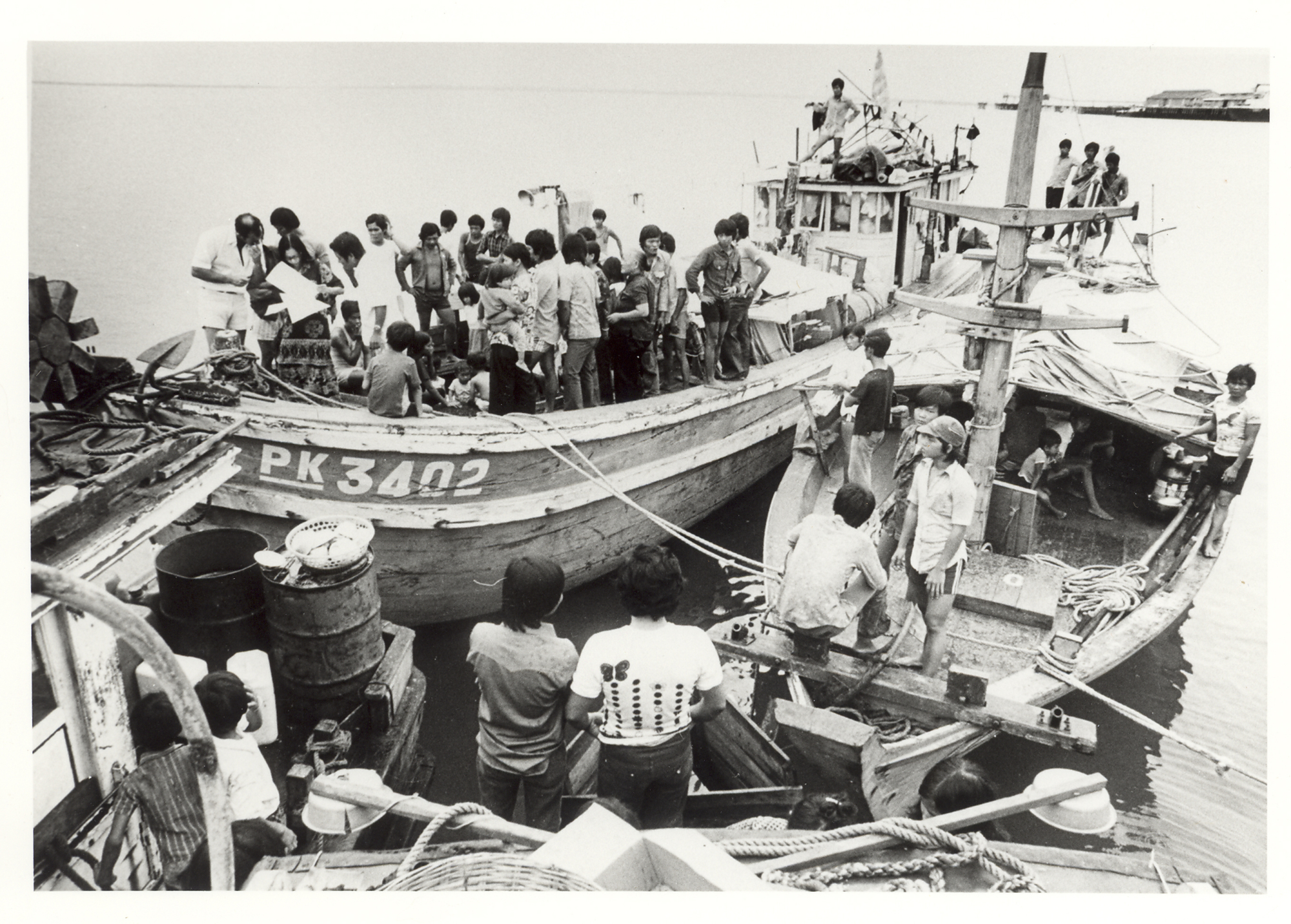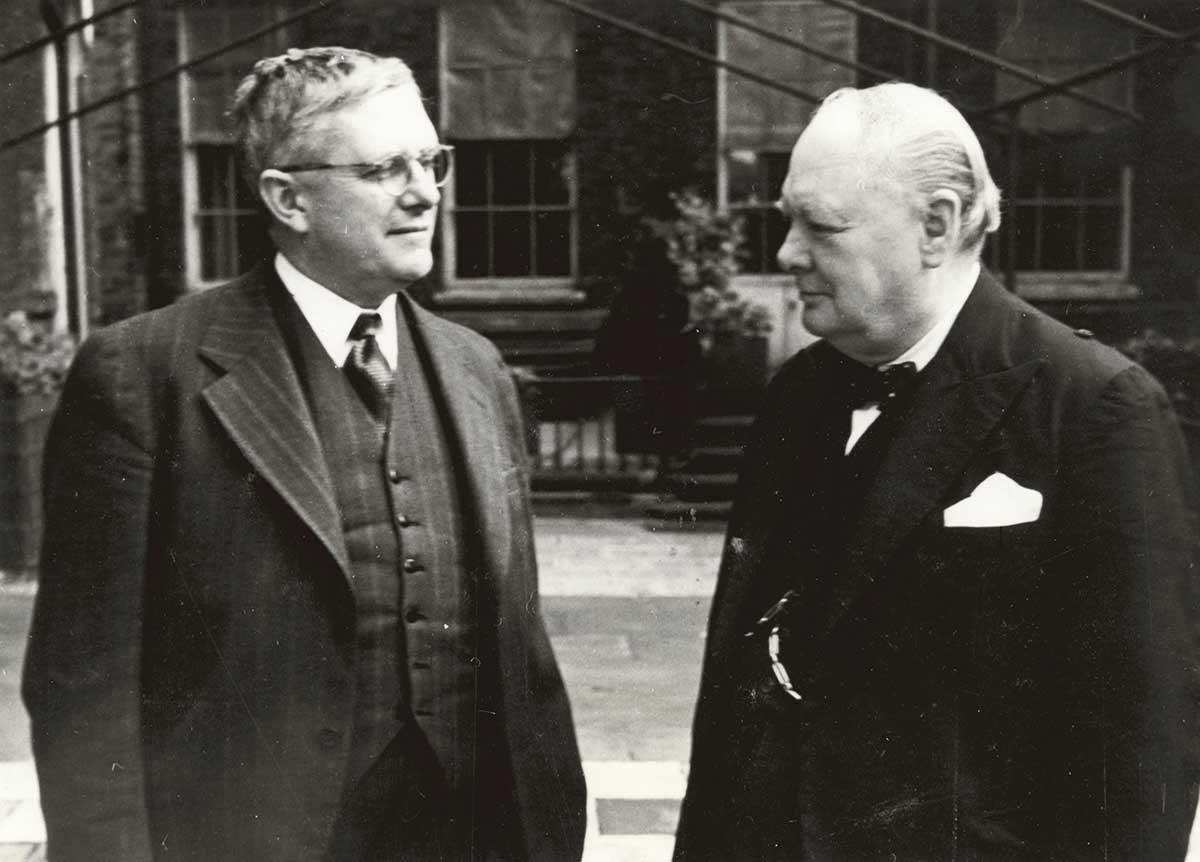Jungle warfare
1942: Japanese forces bomb Darwin but are halted on Kokoda Trail
Jungle warfare
1942: Japanese forces bomb Darwin but are halted on Kokoda Trail
In a snapshot
After Singapore fell to the Japanese Army in February 1942, the focus of the Pacific War moved closer to Australia. Japanese forces bombed Darwin and launched an attack to try to capture the capital city of Papua, Port Moresby. Australian troops battled for seven desperate months on the Kokoda Trail to protect Port Moresby. By January 1943 Australian troops had helped to defeat the Japanese forces on Papua and stop Japan’s advance across the Pacific.
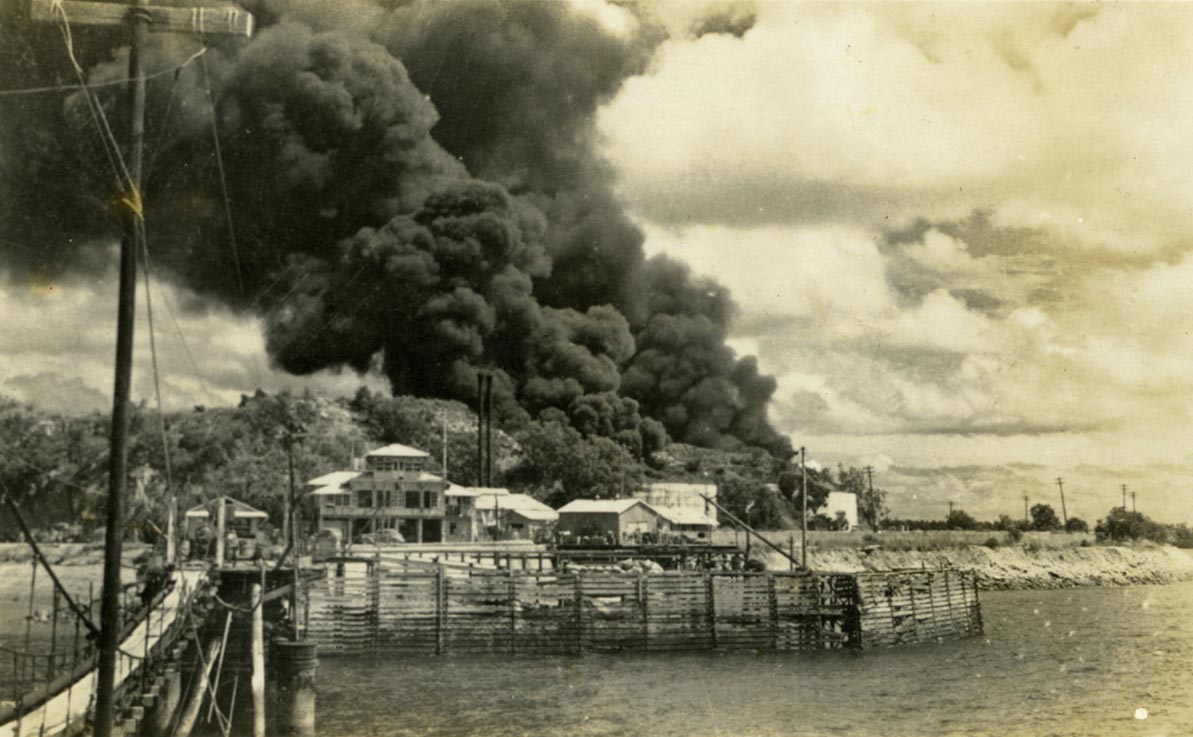
 Can you find out?
Can you find out?
What was the Japanese bombing of Darwin and northern Australia meant to do?
How many people died in the bombing of Darwin and how many times was Darwin bombed?
What was the Kokoda Trail and why was the fighting there so important?
What was the Pacific War?
During the Second World War, Australia fought as a member of the Allied forces with countries including Britain, the United States, France and the Soviet Union. The Allies fought against the Axis powers, which included Germany, Italy and Japan. Although much of the fighting in the Second World War took place in Europe, when Japan entered the war in December 1941 fighting increased in Asia and countries in the Pacific Ocean. This has become known as the Pacific War.
Research task
Find out which other parts of Australia were bombed during the Second World War.
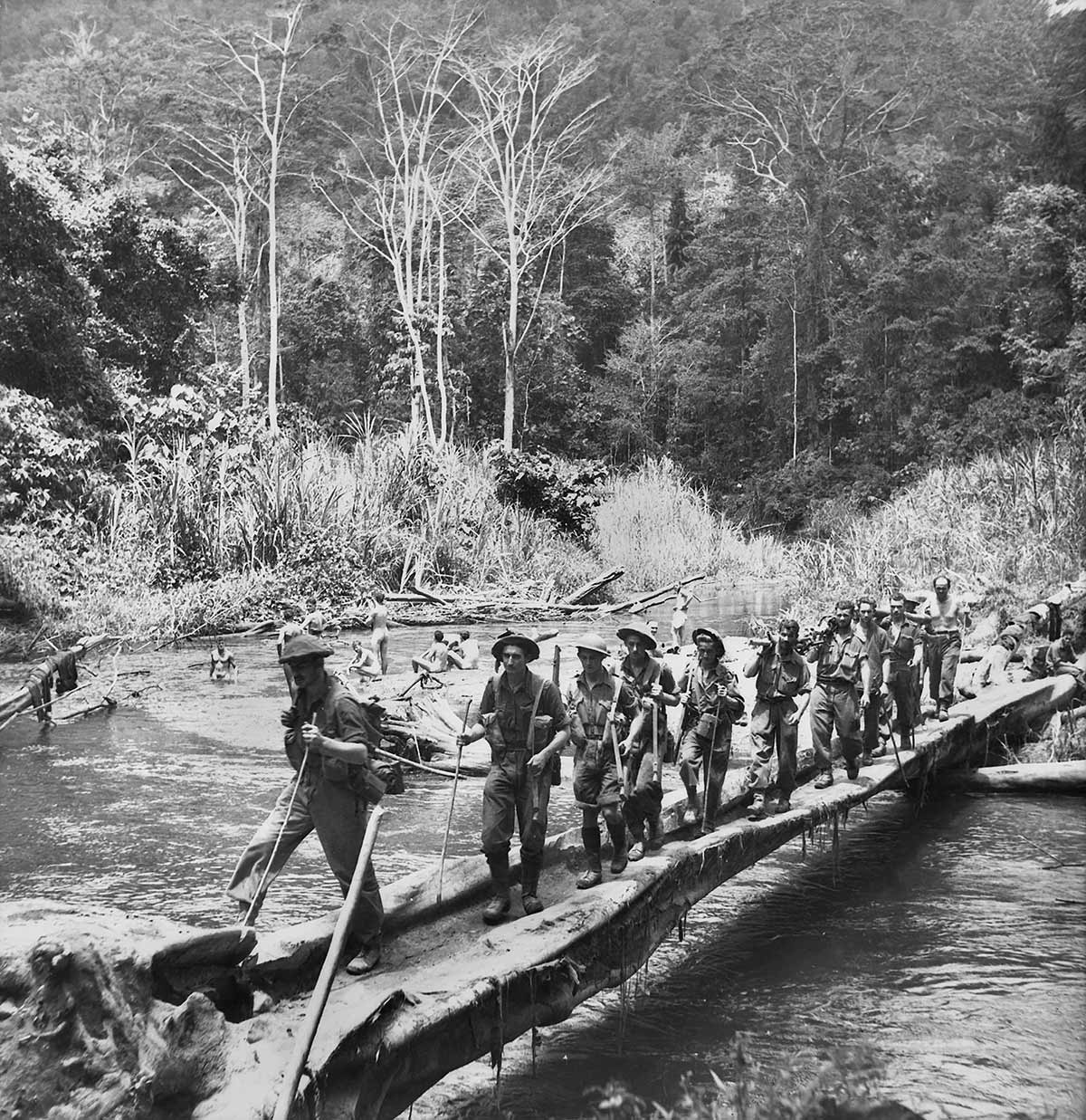
Why was Darwin bombed?
In February 1942 the Japanese Army captured Singapore, which was Britain’s main military base in South-East Asia. Japan then invaded Timor and at the same time bombed the northern Australian city of Darwin.
Darwin was an important military base for Australia and the United States in the Pacific War. The Japanese bombing was designed to damage Allied equipment and make it more difficult for the Allies to send supplies to Timor.
The bombing left 243 people dead and up to 400 wounded. Most of the city’s infrastructure was destroyed. Many Darwin residents were worried that the bombing was the beginning of an invasion and decided to leave the city. Japan bombed Darwin another 63 times during the war, as well as other towns in northern Australia.
How did Japan try to capture Port Moresby?
The Japanese Army planned to capture Port Moresby. If they succeeded it would be easier for them to bomb and possibly invade northern Australia.
Japanese forces had already tried to invade Port Moresby once before, in January 1942, but had been turned back by the United States Navy, with Australian support, during the Battle of the Coral Sea. In July 1942 Japan tried again. It planned to attack Port Moresby from both the sea and the land.
Research task
Japan also attacked another part of Australia during the Second World War, using midget submarines. Find out where this took place and what happened.
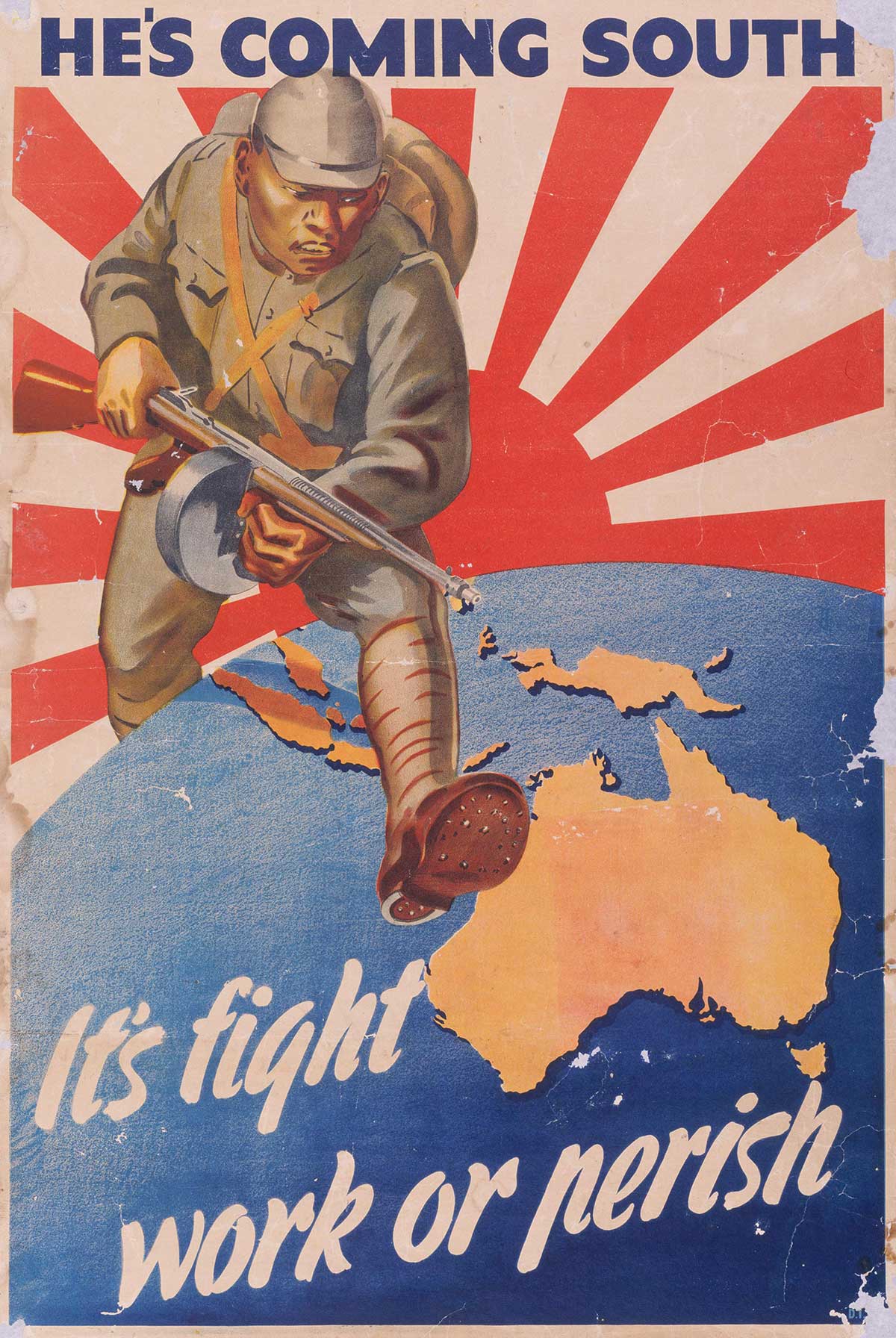
On 21 July 1942 the Japanese Army landed at the towns of Buna and Gona on the northern side of Papua. The only way to reach Port Moresby from the north was by walking the Kokoda Trail, a long and rough track over the island’s mountains.
Papuan and Australian military units attacked the Japanese Army, but by 24 July the Japanese had more than 4,000 troops on shore while the Australians had only 420 troops. These Australian troops were known as Maroubra Force.
For nearly two months Japanese forces managed to slowly travel along the Kokoda Trail, forcing the Australian troops back. By 14 September Japanese forces had reached Ioribaiwa Ridge, which was only 40 kilometres away from Port Moresby.
‘In the Kokoda battle, [the Australian soldiers’] qualities of adaptability and individual initiative enabled them to show tremendous ability as fighting men in the jungle. They were superb.’
Why did the tide of battle turn?
The United States had invaded Guadalcanal in the Solomon Islands in August 1942. This forced Japan to send some of its troops from Papua to try to defend Guadalcanal. At the same time, Maroubra Force had improved their jungle warfare skills and more troops had been sent from Australia as reinforcements.
This gave the Australian troops an opportunity to go on the attack. As a result, they managed to push the Japanese troops north along the Kokoda Trail, and finally all the way back to the towns of Buna and Gona. For three months Australian and American troops fought the Japanese forces, until January 1943 when Japan withdrew from Papua.
Research task
Research the conditions that troops faced on the Kokoda Trail. What can you find out about disease, weather conditions, the terrain, insects, food supplies and anything else that would have affected the troops on both sides?
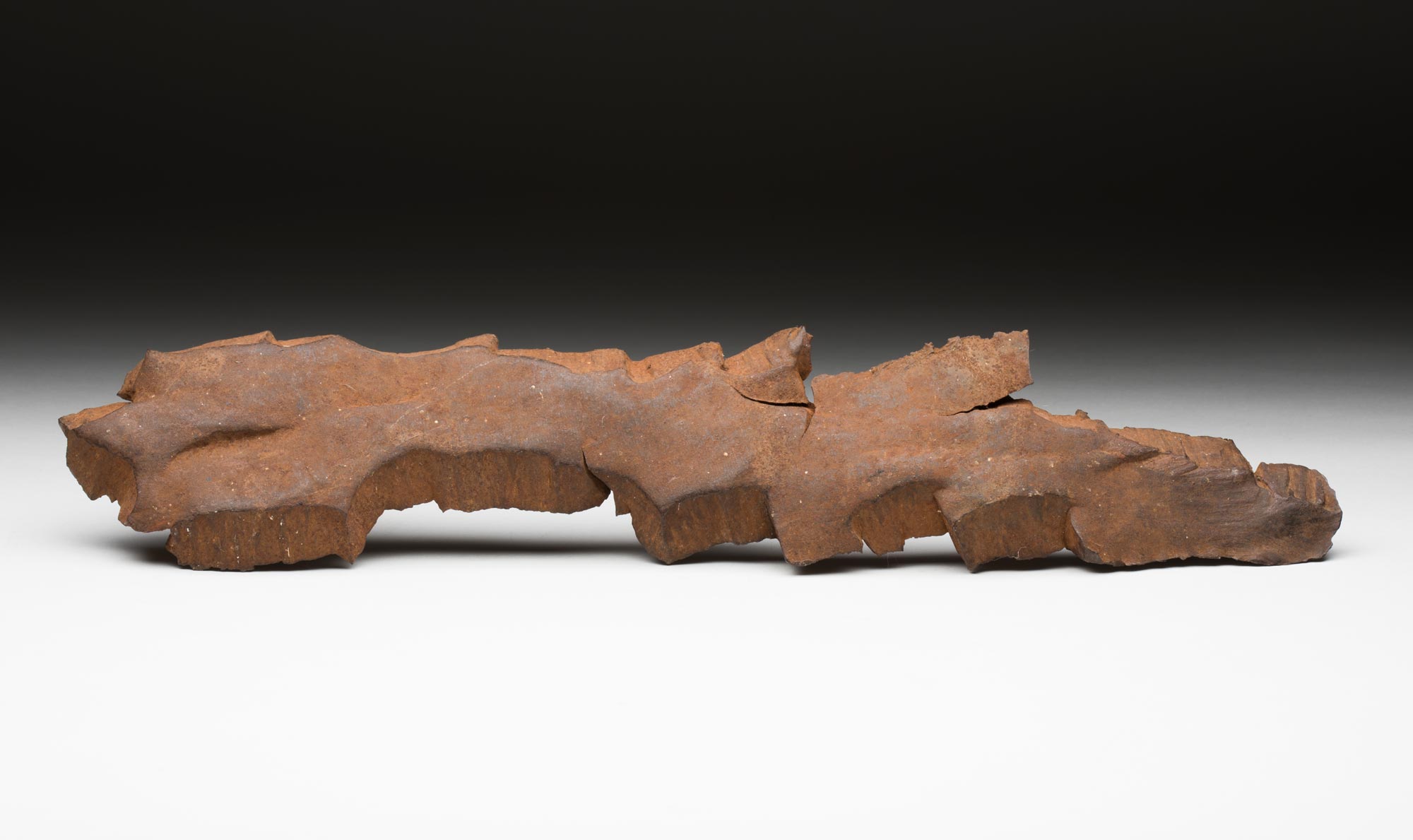
More than 600 Australian soldiers were killed and 1,000 wounded in the battles along the Kokoda Trail. It is estimated that 900 Japanese soldiers died. Troops on both sides suffered from disease and exhaustion in the muddy and steep conditions.
The victory on the Kokoda Trail helped the Allies to turn the tide of the Pacific War.
Read a longer version of this Defining Moment on the National Museum of Australia’s website.
 What did you learn?
What did you learn?
What was the Japanese bombing of Darwin and northern Australia meant to do?
How many people died in the bombing of Darwin and how many times was Darwin bombed?
What was the Kokoda Trail and why was the fighting there so important?






